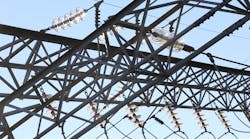Over the past decade, several utilities and commissions have made investments into new technologies, tools, and techniques to modernize the electric grid. As some of these investments are reaching full implementation, there is an opportunity for other utilities and their regulators who are contemplating similar investments to learn from the experiences of the “early adopters.”
While such grid modernization efforts promise large benefits for utilities, customers, and society as a whole in the long term, they come with a big price tag that can, at least in the short term, increase rates.
Prepared for the National Electrical Manufacturers Association (NEMA), our recent report, “Reviewing the Business Case and Cost Recovery for Grid Modernization Investments: Summary of Recent Methods and Projects,” reviewed 21 recent grid modernization investments and conducted 10 case studies to assess how grid modernization technologies have benefitted customers and utilities, and documented cost recovery mechanisms and business cases related to investments.
The grid modernization efforts reviewed range from distribution and transmission hardening to those involving smart grid, advanced metering infrastructure (AMI), distribution automation, and distributed energy resource (DER) optimization. Utilities typically combine grid-hardening investments to improve reliability and resiliency of their systems with investments that involve the modernization of infrastructure or service delivery. Many utilities have defined (or are at the cusp of defining) their renewed “customer engagement strategies,” which almost always rely on the technologies and capabilities enabled by grid modernization efforts.
While some of these grid modernization efforts were initiated by utilities, most of the efforts we reviewed were initiated in response to local or state-level policy or legislative drivers. Contrary to popular belief, grid modernization efforts are not limited to more visible U.S. states such as California, Illinois, and New York, but are taking place in many states across the country, each driven by their own priorities, such as improved resilience or AMI infrastructure.
Based on the review, our study found that:
- Smart grid and distribution system modernization investments take the front seat in most of the grid modernization plans reviewed. More utilities are proposing smart grid and distribution system modernization plans, and regulators are also more enthusiastic about enabling these proposals. There seems to be general recognition that the “utility of the future” will not be possible with an antiquated grid.
- Grid modernization projects driven by state initiatives face just as many hurdles in the regulatory process as others that are not necessarily led by state policies. In most cases, regulatory approvals were contingent on meeting the required threshold in a typical benefit-cost test, such as the Total Resource Cost (TRC) test. Some notable examples received approvals based on other approaches, such as break-even analysis, proof-of-cost prudency, and foundational nature of investments for enabling other utility initiatives.
- Obtaining regulatory approvals took approximately 13 months on average. Delays were associated with presentations of incomplete benefit-cost analysis and strong stakeholder opposition. Bringing stakeholders to the discussion early in the process and incorporating as much of their input to the cost-benefit analyses as possible have been very effective in achieving favorable outcomes.
- While a majority of cases relied on cost recovery through general rate case filings, some cost recovery mechanisms also relied on formula rates and rate riders to address the regulatory lag.
Our report further found that the need for cost recovery of grid modernization investments has prompted some jurisdictions to consider performance-based regulation, or more broadly, “alternative regulation” to address the shortcomings of the traditional cost-of-service model.
These models typically improve the alignment of revenue recovery to utility costs by reducing or eliminating the regulatory lag, and reducing utilities’ disincentives for engaging in grid modernization efforts, leading to timely recovery of these large capital expenditures. Moreover, emerging performance incentive mechanisms reward utilities for undertaking projects that might potentially lead to earning losses in the short term, but lead to overall cost savings and lower rates for customers in the long run.
Several of the U.S. states with innovative regulatory environments (such as New York) have either instituted these emerging performance mechanisms or are in the process of evaluating them. We expect this trend to continue, with more jurisdictions moving toward performance-based regulation as the urgency of grid modernization, DER integration, and electrification increases.
Lastly, it is important to note that customer engagement is a key component of a successful grid modernization effort. Utilities are moving away from the “ratepayer” mindset and are seeking new ways to turn into more customer-centric organizations. More and more customers are interested in new technologies, more rate options, and access to cleaner energy choices. Utilities’ grid modernization efforts will help meet these new needs and demands from their customers.
A key element of any utility’s grid modernization plan — whether in Europe, or North America — should be this: to communicate the value of these new investments to its customers, and have them understand and appreciate the new level of service they will be getting from their good old utility.


